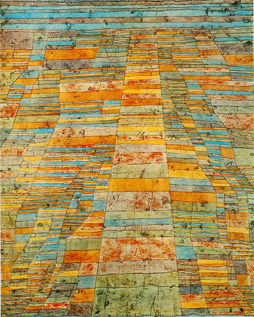Hitler and his friends thought Paul Klee the very model of the mad modern artist. In 1933, when the National Socialists came to power, the painter and draughtsman was dismissed from his post as a professor at the Dusseldorf Bauhaus and denounced in the newspapers as a “Siberian Eastern Jew and a dangerous cultural Bolshevist”. In 1937, his work was given a starring role in the massive touring exhibition of “Entartete Kunst” (“Degenerate Art”) organised by Hitler and Goering to reveal the decadence into which Jews, negroes, modernists and left-wing intellectuals had plunged German culture. No fewer than 17 of Klee’s delicate, idiosyncratic bizzareries were included in this supposed freak show, gathered together under the rubric “Art of the Psychopath”.
By that time the artist, who was born in
Not everyone in Bern was like...


